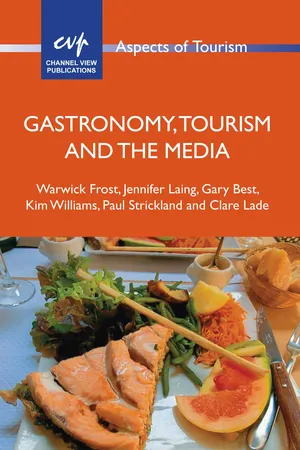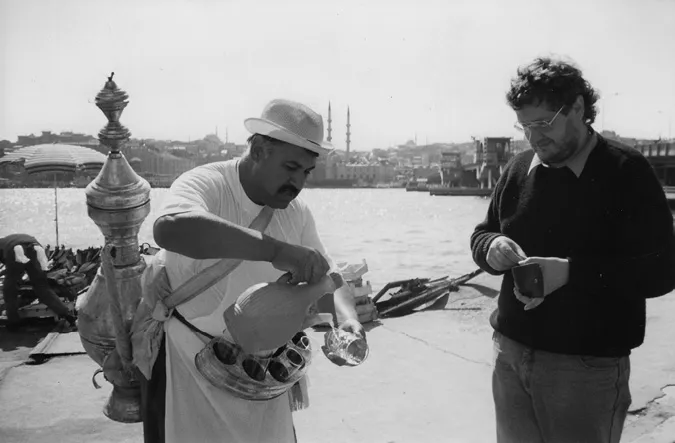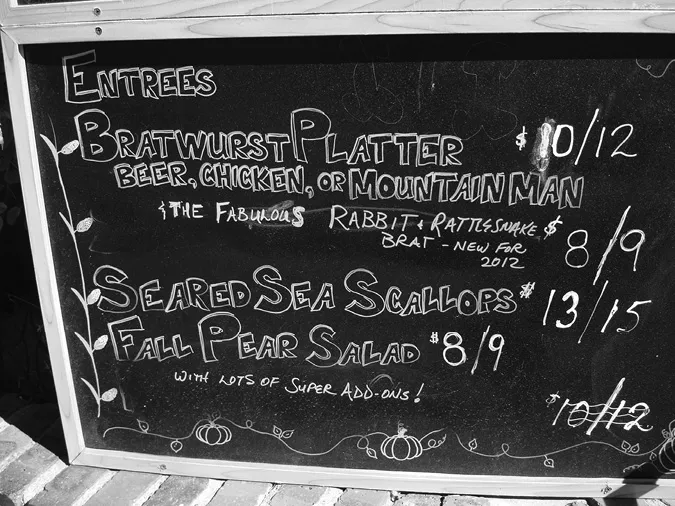![]()
Part 1
Foundations and Principles
![]()
1Gastronomy and Tourism through the Media Lens
The Accidental Tourist (Anne Tyler, 1985)
Macon is the central character in this novel. Based in Baltimore, USA, he writes a successful series of guidebooks for Americans who are forced to travel overseas on business. The idea is that such ‘accidental tourists’ want familiarity and sameness rather than travel adventures:
Accidental Tourist in France. Accidental Tourist in Germany. In Belgium. No author’s name, just a logo: a winged armchair on the cover. He covered only the cities in these guides, for people taking business trips flew into cities and out again and didn’t see the countryside at all. They didn’t see the cities, for that matter. Their concern was how to pretend they had never left home. What hotels in Madrid boasted king-sized Beauty-rest mattresses. What restaurants in Tokyo offered Sweet’n’Low? Did Amsterdam have a McDonald’s? Did Mexico City have a Taco Bell? Did any place in Rome serve Chef Boyardee ravioli? Other travellers hoped to discover distinctive local wines; Macon’s readers searched for pasteurized and homogenized milk. (Tyler, 1985: 12)
Past Views of Travel and Food
Until quite recently, food was viewed as a necessary evil for most tourists. It was fuel, a convenience, a hygiene factor in the tourist experience – mainly noticeable if it was bad (Quan & Wang, 2004; Scarpato, 2002a). As Cohen argued, while most tourists were interested in sights, customs and cultures that were different, they were, ‘able to enjoy the experience of change and novelty only from a strong base of familiarity, which enables them to feel secure enough to enjoy the strangeness of what they experience’ (Cohen, 2004: 38). An environmental bubble of escorted group tours and international hotels allowed the visitor to venture out, but return to safety and familiarity for comfortable and comforting dining. The epitome of such a view of travel was the ubiquity of international cuisine, a series of generic Western dishes that came to dominate global hospitality practices and training courses. The result of such standardisation was that tourists were not only assured that hotel chains offered the same standard accommodation and service, but they were furthermore provided with the same safe menus. However, with sameness came dissatisfaction. In introducing her ground-breaking A Book of Mediterranean Food, Elizabeth David assured her readers that it contained recipes for, ‘honest cooking’ as opposed to the ‘sham grande cuisine of the International Palace Hotel’ (David, 1951: 5).
Where more adventurous travel occurred, food was one of the risks. The more exotic the destination, the more likely it was that the intrepid visitor would succumb to an upset stomach or food poisoning. Such perils were a badge of honour. A good traveller was one with a cast-iron stomach. With the rising popularity of travel narratives from the 19th century onwards, a series of food-related tropes developed, and were in turn copied by those who followed. To illustrate, we consider one of the best-loved travel narratives of the Victorian era.
A Ride to Khiva (Fred Burnaby, 1877)
A captain in the British army, Fred Burnaby was looking for adventure in a time of peace. When he saw a newspaper item that the Russians had forbidden British travellers to enter Central Asian territory under Russian control, he was outraged. He resolved to publicly flout this restriction by openly journeying from Moscow to Khiva (now in modern Uzbekistan).
Observations on food are woven throughout the book. What is interesting is how these are all connected to his persona as a brave traveller in a very hostile physical environment. It would have been very easy for Burnaby to complain of the food, but this would mark him as delicate and boorish rather than hardy and stoic. Furthermore, he presented his guides and the local people as good fellows, worthy of British sympathy and support against oppression. Accordingly, their culture and cuisine was constructed as novel, but not nightmarish.
In the depths of winter, he suffered from the cold and exposure and was grateful for the food he received. At day’s end, he was served ‘a strange culinary composition of Nazar’s [his guide], made of rice, eggs, and chocolate, boiled in milk, over a spirit lamp – this strange mixture proving in our ravenous state the most savoury of dishes’ (Burnaby, 1877: 119). On another day, dinner was a pot of fatty mutton and rice:
It was not a very appetising spectacle, nor a dish that Baron Brisse [a noted French food writer of the time] would have been likely to add to any of his menus, but after a ride across the steppes in midwinter the traveller soon loses every other feeling in the absorbing one of hunger, and at that time I think I could have eaten my great grandfather if he had been properly roasted for the occasion. (Burnaby, 1877: 205)
Even when honoured with a feast of horsemeat, Burnaby made no direct criticism. Instead he described the guests’ ravenous consumption, sure that most of his readers shared similar feelings to him. Only once did he strategically allow the facade to fall. As a true explorer and adventurer, he could stomach almost anything. However, there was one exception that he shared with the readers, demonstrating his gentlemanly tastes and manners in the face of adversity. That was a cup of tea. Here he revealed the full horror:
It was not tea in our sense of the word, but a mixture which had the peculiar flavour of grease, salt and tea-leaves. Swallowing my nausea as best I could in order to avoid offending my host, I drank off the nasty draught, and exclaimed in the best Tartar I could master for the occasion, ‘Excellent!’. (Burnaby, 1877: 209)
Changing Views
Despite the long-held view that food was one of the travails of travel, food often functioned as more than fuel or danger, even if that was often barely recognised. In prehistoric times, surplus food harvests were the catalyst for travel to cross-tribal gatherings. These early festivals were characterised by feasting and had an important social role of providing a temporary peace for settling disputes and arranging marriages. An example of this occurred in south-eastern Queensland, where Aboriginal groups would travel hundreds of kilometres to partake in the consumption of Bunya nuts. Highly rich in fat (making them deliciously attractive), these trees fruited prolifically, but only every two to three years (Frost & Laing, 2015a).
As modern societies developed, harvest festivals and other food traditions sometimes remained and these would attract recent emigrants to return temporarily to their home regions. The extraordinary flows of travel within China for the feasting and celebration of New Year remain a striking example of this today. Some regional specialities drew in visitors eager to try for themselves. In the 19th century, for example, Devon became famous for its dairy produce and afternoon teas featuring scones, jam and clotted cream. This meal became the major feature of the region’s destination image and generated strong repeat visitation. Mass tourism to the seaside, also a product of the 19th century, generated its own foods and traditions, such as the consumption of fish and chips wrapped in newspaper. Similarly, carnivals, amusement parks and international expositions created fast food offerings for time-poor visitors who preferred to queue for rides and attractions rather than sit-down meals. Accordingly, hot dogs, hamburgers and ice cream cones were all invented for these markets.
However, it was late in the 20th century that there was a revolution in the relationship between food and tourism. In a relatively short period of time, food and cuisines shifted to being one of the key motivations for travel. To better understand this shift, the following seven qualifications need to be made:
(1)The enjoyment of food while on holiday becomes a mass phenomenon. Trends, fashion, media and marketing combine to link food to culture and to provide it with status as an integral part of the tourist experience.
(2)Travelling for food shifts from the domestic (as in the examples above) to the international. The status now arises from consuming the exotic.
(3)The changes are demand centred. Tourists want to indulge in food and associated cultures. Adventure replaces risk in influencing food experiences. This could include interactions with exotic sellers of food and beverages (Figure 1.1) and the consumption of unusual – even normally repulsive – foods and meals (Figure 1.2).
Figure 1.1 Adventurous interaction with a street food vendor in Istanbul, Turkey (photo S. Harvey)
Figure 1.2 Adventurous menus – rattlesnake bratwurst, Cowgirl Restaurant, Santa Fe, USA (photo W. Frost)
(4)Interest in food and cuisine becomes an example of serious leisure (Stebbins, 1992). People are interested in learning about food, having new experiences and seeking out new tastes, and they link this to their own personal development and identity.
(5)The demonstration effect is critical. To gain status, people copy others. A food-savvy elite leads the way, but is quickly followed by the mass market. There are leaps across cultures. The rapidly expanding Asian middle class, for example, follows Western trends, although in recent years there has been a refocus on their own traditions and cultures.
(6)These interests in gastronomy and tourism are often constructed in opposition to modernity, both as a reaction and as an antidote. Globalisation, for instance, generates a movement towards localism. The growth and ubiquity of fast food leads to slow food.
(7)Supply is altered to cater for demand. Tour operators develop food-themed tours. Certain destinations reinvent themselves as attractive food destinations, through marketing campaigns and the development of culinary attractions, trails and routes.
Causes of change
The reasons for these changes are a combination of economic, social, technical and cultural. It is valuable here to briefly consider some of the reasons for these changes that have been advanced in the recent literature. These fall into two camps. The first recognises changes in the scale and nature of global tourism. Richards (2002) highlights both increased tourism mobility and growing competition between destinations as forces for new gastronomic products. Others see destinations as actively entrepreneurial, developing gastronomic products to attract more tourists (Du Rand & Heath, 2006; Gössling & Hall, 2013).
A second grouping identifies dissatisfaction with modernity as stimulating interest in food and tourism. Boniface (2003: 16) sees the catalyst as a ‘world crisis of confidence in the way of life now come to be its routine’. Accordingly, anxious and insecure tourists are seeking out different foods and cultures – usually traditional and local – as a means of constructing a new self-identity that contrasts with the sameness of the everyday. As Richards (2002: 4) puts it, ‘with the disintegration of established structures of meaning, people are searching for new sources of identity that provide some security in an increasingly turbulent world’. As such, food becomes a quest, perceived as having the power to effect personal transformation.
The Role of Media
In this book, our aim is to explore these forces in depth, with a particular focus on the media. In adopting this approach, we view media as important in two ways. The first is as instruments for disseminating and influencing attitudes, ideas and ultimately change. The second is as a lens for examining and understanding the processes and outcomes of these changes. These two approaches are built on two broad paradigms. The first links the media with marketing and may be viewed from a business or industry perspective as a way of increasing sales for destinations and operators. The second views the media from a sociological standpoint, utilising media as a means to better understand what is happening within societies. For this book, we are attempting a delicate balancing act of examining and analysing these phenomena from both business and sociological perspectives. Our view, which we try to communicate to our students, is that to understand disciplines such as tourism, media studies, hospitality, gastronomy and events, both approaches are equally important and need to be fully considered.
What part, then, does the media play in these changes towards food and travel? While tourism researchers have long been interested in media, the tendency has been to consider it in terms of destination imaging and marketing. How can we extend this consideration more broadly, particularly to the phenomena of increased interest in food? In this introductory chapter, it is instructive to examine some of the main themes and theories in tourism and the media and begin to explore how these might be applied to gastronomy and tourism.
Induced and organic messages and images
The early work on tourism and the media made a simple division between induced and organic sources. Where the industry created the media, as in advertisements, this was designated as induced. Where the media was created by forces other than the tourist industry, such as filmmakers or novelists, this was seen as organic. Induced media marketing was a conventional approach, which allowed operators and destinations to ha...


